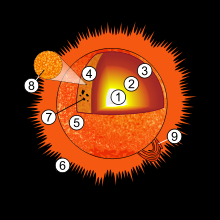Lesson 1: Ancient Astronomers
Hipparchus was the:
A: first to see galaxies
B. first to make a detailed star chart
C. first to make a telescope that discovered Pluto
D. first to write a book about going into space using rockets
Ptolomy was a Roman citizen who:
A. wrote the oldest existing book on Astronomy complete with star charts and orbits
B. studied only the moon
C. was the first to announce that the Earth revolved around the Sun
D. discovered Neptune in 1856
LESSON 2: FAMOUS CONSTELLATONS
See how many you can identify:
A. Leo the _____________.
B. Pegasus the _______________________.
C. Orion the ____________________.
D. Draco the _________________________.
E. Cygnus the _________________.
F. Gemini the _________________.
G. Cancer the ______________.
H. What was Hercules famous for? _________________
The green lines connect the constellation Orion. In the winter sky, Orion's Belt consists of 3 stars lined up in a row. Betelgeuse is a beautiful red star while Rigel is a bright blue star.
By the way, M43 and M 42 are very special, but they are not single stars.
This is the flag of Alaska. What group of stars to do you see?
Lesson 3: Classification of Stars
We will discuss this chart in detail.
Movie: We will watch part I of "Journey to the Stars" from the Museum of Natural History next week. Stay tuned.
ACTIVITY:
Payloads for Helium Balloons
Experiment. Use helium balloons and paperclips to find out the payload for your balloon. Predict how many paperclips your balloon can lift. The concept of exact measurements for rocket payloads is an integral part of NASA's engineering department.
Why do you think this is so important to calculate?
Attach one large paperclip to the balloon string. Open it slightly so that it will hold the payload.
Now add large paperclips one at a time and check to see if the balloon will float.
After you have reached your maximum large paperclip limit, switch to small paperclips. Continue the experiment.
NASA wants to get every gram of weight they can on each rocket payload.
Now use a small bit of blue tacky and add this to your last paperclip.
Record your results on the Experiment Data Page.
Now look at all the Data Pages together.
Are all of the payloads the same?
Can you give 2 reasons why the results turned out they way they did?



























































